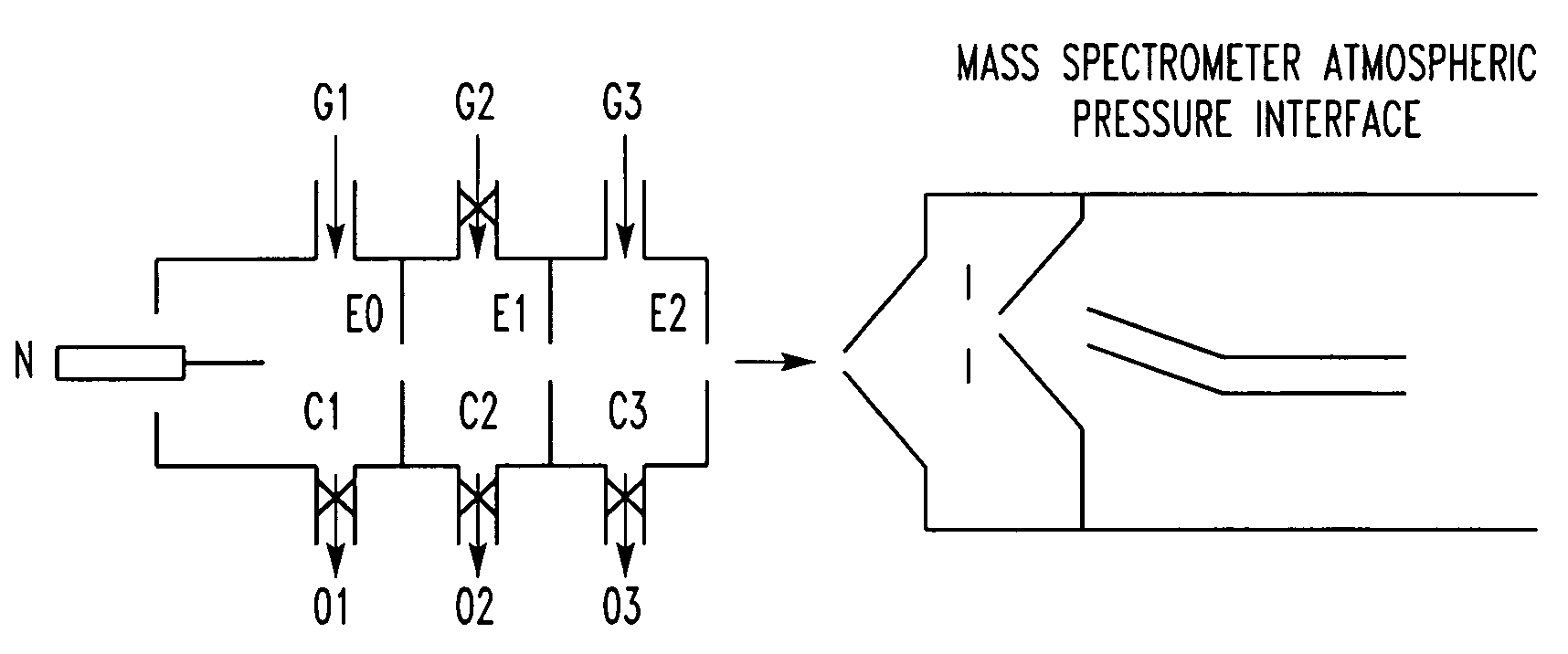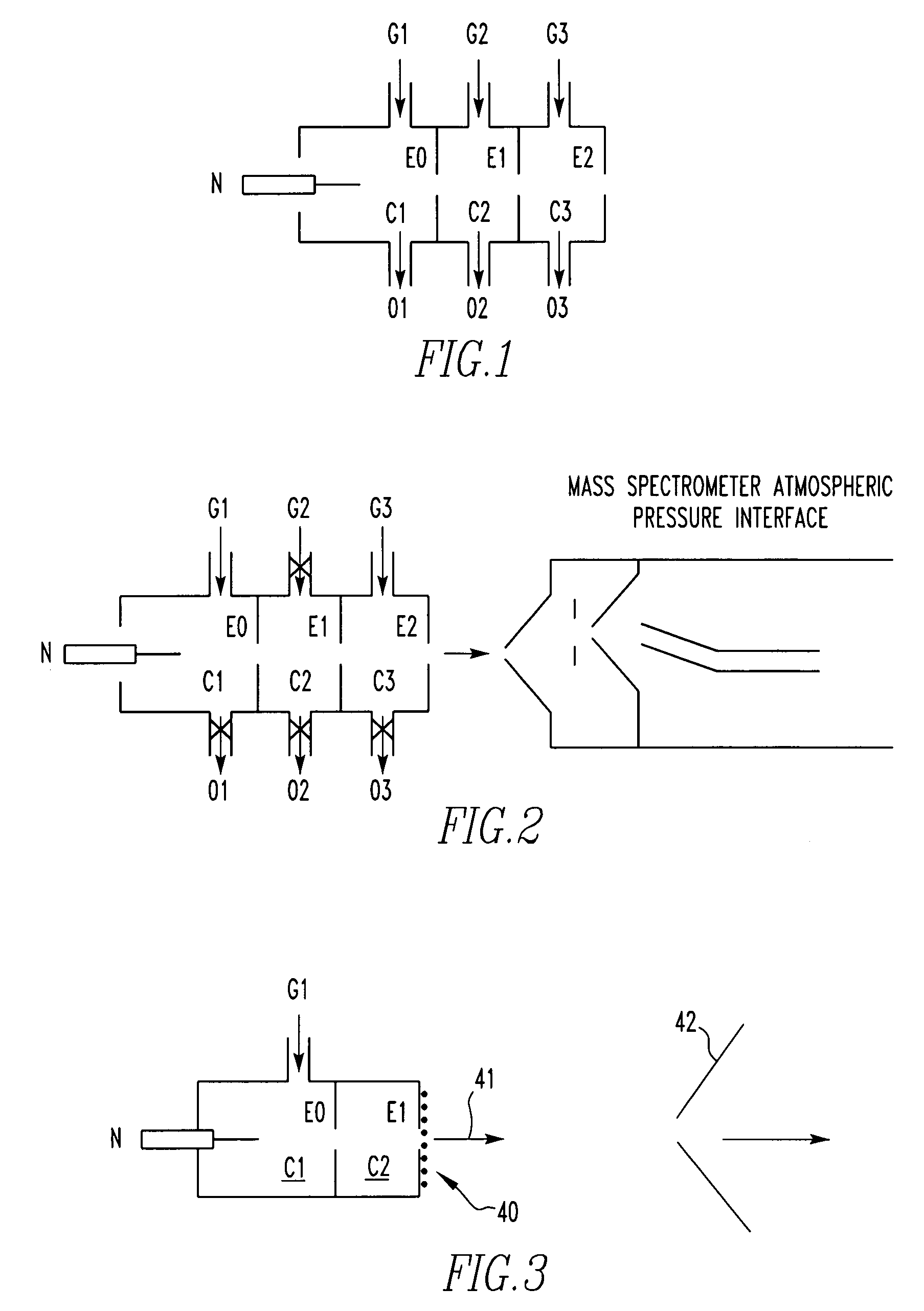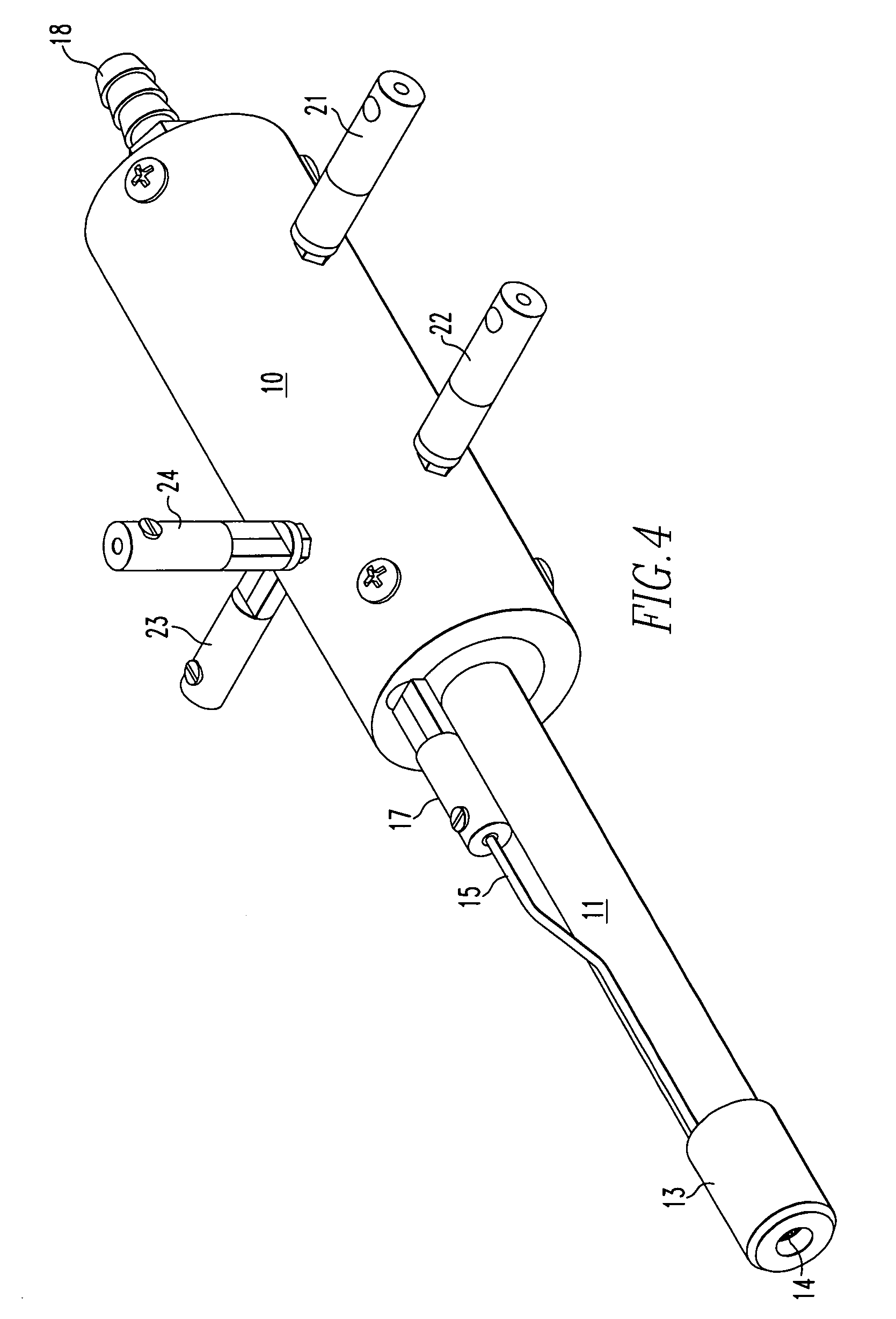Method for atmospheric pressure analyte ionization
a technology of atmospheric pressure and analyte ionization, which is applied in the field of atmospheric pressure analyte ionization and mass spectrographic methods, can solve the problems of electrode degradation, loss of analyte ions sensitivity, and difficulty in maintaining discharg
- Summary
- Abstract
- Description
- Claims
- Application Information
AI Technical Summary
Benefits of technology
Problems solved by technology
Method used
Image
Examples
example 1
[0068]In this example, helium was passed through a first chamber at atmospheric pressure in which an electrical discharge was maintained. The helium was passed out of the first chamber into a second camber or headspace-containing vapor from a solution of 0.1 trifluoroacetic acid to form trifluoroacetate (TFA) ions. The gas mixture containing TFA ions (mol. wt. 113) were directed at surfaces contaminated with explosives HMX (mol. wt. 296), RDX (mol. wt. 222.15), PETN (mole. wt. 316) and NG (mol. wt. 227). The gas directed off the surfaces was allowed to enter the mass spectrometer and the following adduct peaks were identified as shown in FIGS. 8A, 8B, and 8C:[0069]1. RDX+TFA (mol. wt. 335)[0070]2. HMX+TFA (mol. wt. 409)[0071]3. PETN+TFA (mol. wt. 429)[0072]4. NG+TFA (mol. wt. 340)
Substantially identical results have been obtained holding a vial containing 0.5% TFA in acetonitrile below the contaminated surfaces.
[0073]Other suitable halogen-containing compounds, such as methylene chl...
example 2
[0074]In this example, the reactant gas was the vapor from a solution of NH4OH in water. The helium and reactant gas mixture was directed against a surface contaminated with TATP, a common terrorist explosive (mol. wt. 222). A strong peak in the mass spectrum (see FIG. 9) is found at 238 (TATP+NH4).
example 3
[0075]In this example, the reactant gas was water vapor. The drug artesunate taken in tablet form as a treatment for malaria is legitimately prepared by Guilin Pharma. It is massively counterfeited in South East Asia. With no sample preparation, the real and counterfeited drugs can be distinguished by the method disclosed herein. The active ingredient artesunate has a molecular weight of 283. The mass spectra of real and counterfeit drugs are shown in FIGS. 10A and 10B. The tablets were simply placed near the entrance to the mass spectrometer and the He / water vapor reactant gas was blown at the tablets.
[0076]As used herein, an “atmospheric ionization source” is one that does not require a vacuum pump. Of course, the analyzer (mass spectrometer) may require vacuum pumps, but the ions are formed at pressures somewhat above and below atmospheric pressure.
PUM
| Property | Measurement | Unit |
|---|---|---|
| pressures | aaaaa | aaaaa |
| pressures | aaaaa | aaaaa |
| energy | aaaaa | aaaaa |
Abstract
Description
Claims
Application Information
 Login to View More
Login to View More - R&D
- Intellectual Property
- Life Sciences
- Materials
- Tech Scout
- Unparalleled Data Quality
- Higher Quality Content
- 60% Fewer Hallucinations
Browse by: Latest US Patents, China's latest patents, Technical Efficacy Thesaurus, Application Domain, Technology Topic, Popular Technical Reports.
© 2025 PatSnap. All rights reserved.Legal|Privacy policy|Modern Slavery Act Transparency Statement|Sitemap|About US| Contact US: help@patsnap.com



